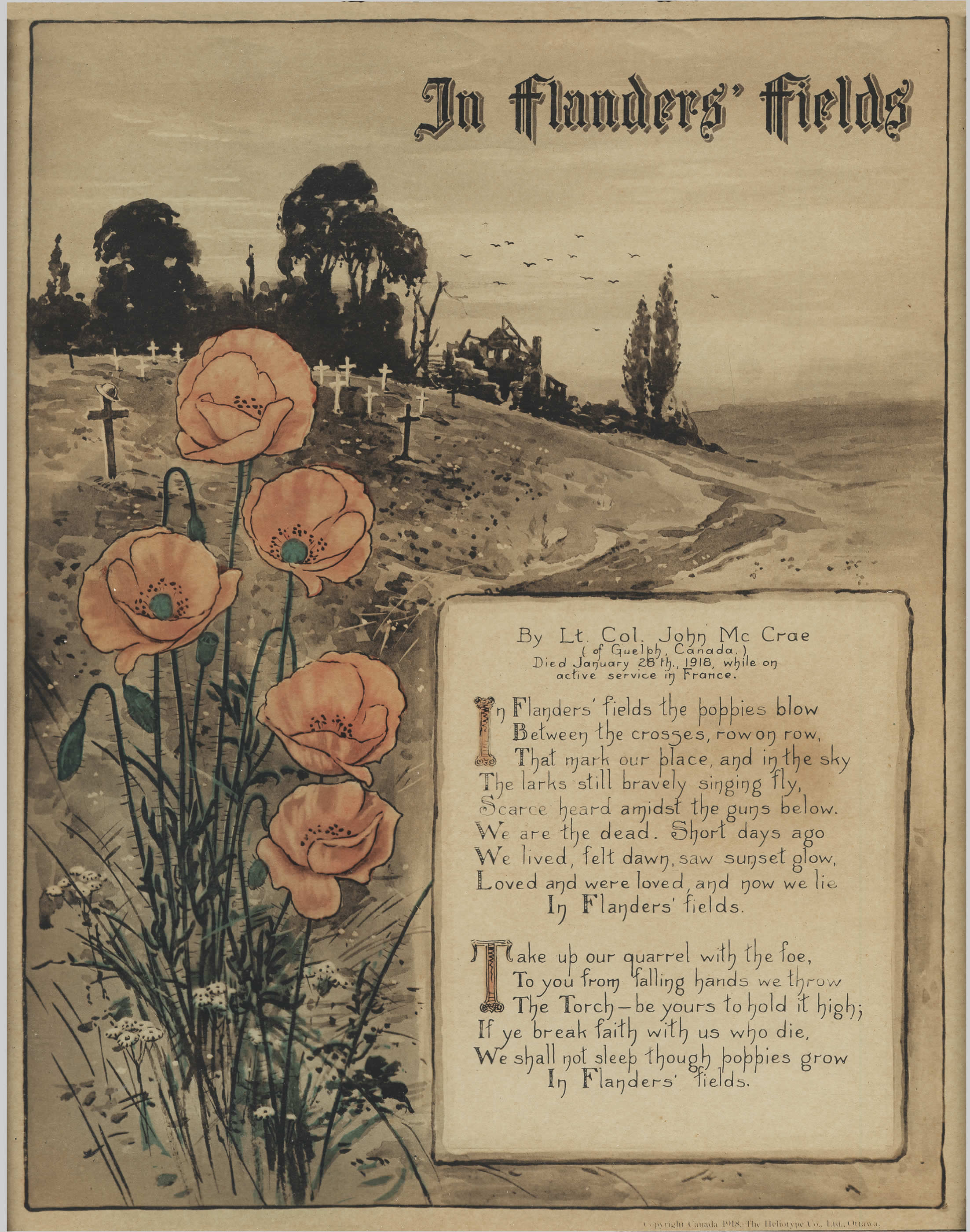 |
| photo by Carla Anne Coroy. |
At the eleventh hour of the eleventh day of the eleventh month of 1918, the hostilities of World War One ended. It was an armistice, an agreement to lay down weapons and stop fighting. There was no surrender by defeated parties. Combat ended and the soldiers went home.
The end of the War is remembered in countries involved in World War One on November 11. For many years it was called Armistice Day, but in the United States in 1954, the name was changed to Veterans Day. Today, In many countries it is called Remembrance Day, and the symbol associated with it is a red poppy.
 |
| Remembrance Day, London 2014. photo from The Daily Mail. |
How did the poppy become the symbol of the end of the most devastating war the world had known? It started with a poem written by a Canadian doctor, Lt. Col. John McRae, in 1915, who was serving in Europe during World War One. He titled his poem "We Will Not Sleep". It is known today by its alternate title, "In Flanders' Fields."
 |
Illustrated 'In Flanders' Fields" from the collection of the Canadian War Museum |
A woman, Moina Belle Michael, who was volunteering in what we would call today a USO, in New York City, saw a copy of the poem in a magazine on November 9, 1918. She vowed to wear a red poppy as a sign of remembrance. She started a campaign to make the red poppy a symbol to remember those who lost their lives in The Great War. In 1919, the newly formed American Legion adopted the memorial poppy as a symbol. In 1921, artificial red poppies, made in France, were sold in the United States to raise funds for rehabilitation and resettlement of areas in France that were devastated by battles in the War. Although the poppy did not become a symbol for Armistice Day in the United States, Poppy Day did become a way to raise funds for the American Legion at Memorial Day in May.
In 1954, The Armistice Day holiday became Veterans Day. Instead of remembering war dead, it honors all living veterans. Memorial Day, the last Monday in May is the day that honors American soldiers who died in wars.
However in many other countries, November 11 continues to be a day of remembrance for those who died in World War One, and the red poppy is the symbol of those who lost their lives in World War One, one hundred years ago.


